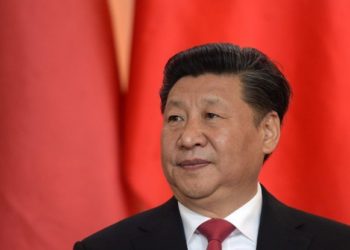There are differing and even conflicting narratives about China’s role on the global stage of science, technology, and innovation. On the one hand, various quantitative indicators suggest that the country’s capabilities are on a sharply rising trajectory. On the other hand, there is a serious dependency of Chinese enterprises upon key foreign technology and equipment.
China annually imports some $200 billion worth of semiconductors, a vital component of anything computerized, from overseas. The lifeline of China’s high-tech development is literally under foreign control. Such vulnerability has raised concerns about the importance of developing indigenous innovation capability.
Still, in the past few years, China has become a technologically sophisticated society. The country of 1.4 billion increased spending, there has been a steady rise in the contributions of Chinese scientists to international publications, Chinese inventors are filing more and more patent applications, and the state is developing modern, sophisticated, and world-class facilities.
Many of the world’s most innovative companies have moved beyond using China as a manufacturing center to establishing more innovative research centers in the country to develop new products and services for global markets and the Chinese domestic market.
Measured by such statistics, China seems to rival to Silicon Valley and other high-tech zones. However, we need to take a closer look behind or beyond these indicators.
China’s Investment in Research and Development
Since the 1990s, China’s spending on science and technology (S&T) and research and development (R&D) has been increasing at a rate faster than its overall economic growth. In 2017, China spent $254 billion (2.13 percent of its increasing GDP) on research and development. This puts China ahead of the European Union’s average percentage of GDP spent on R&D, and the country is expected to overtake the United States soon.
However, businesses have allocated few financial resources to carry out innovative activities. A significant amount of R&D personnel is not educated beyond undergraduate education. Companies such as the giant telecom equipment manufacturers Huawei and ZTE are the outliers instead of the norm.

Even with these companies investing in R&D, they still depend heavily on foreign technology and supplies. This kind of companies mainly benefit from business model innovation by adapting successes elsewhere to China.
It remains a question whether the increasing sums of R&D money have been well spent. A significant portion of the research carried out in China is derivative of what has been done elsewhere. This also explains why Chinese scientists have not yielded significant breakthroughs commensurate with the rising R&D expenditure.
Misconduct in Research
Measured by the number of papers published in journals indexed by Science Citation Index, China ranked the world’s second in 2016, accounting for some 20 percent of the global total. In 1997, China only contributed 0.2 percent.
While Chinese scientists published a record number of papers, misconduct in research such as plagiarism, falsification, and fabrication seem to be common. In 2015, scientific publisher BioMed Central withdrew 43 Chinese papers over the “fabrication” of peer reviews.

Two years later, the Springer Nature Publishing Company withdrew 107 papers published in the journal Tumor Biology as the investigation found, again, that the Chinese authors faked peer reviews. These retractions involved Chinese scientists from leading universities such as Peking University and Shanghai Jiao Tong University. The incidents have damaged the image of Chinese science and attracted the attention of Chinese President Xi Jinping.
Patents and Intellectual Property
We should give China credit, as the country over the years has improved its intellectual property regime. For example, China promulgated its Patent Law in 1984 and amended it several times – in 1992, 2000, and 2008 – to harmonize with the international norms. The law is currently being amended again.
However, a decentralized China has made intellectual property rights protection difficult, if not impossible. The country’s weakness in this aspect has been a major concern for foreign companies, which have condemned Chinese companies for engaging in intellectual property theft.
In early 2017, ZTE, the company that filed the second largest number of patent applications with the Patent Cooperation Treaty, not only saw its market value plummet significantly but also had to cease its operation because it was cut off from the key components, such as semiconductors, that it used to source from the United States for its violation of the American export control regime.
Way of Thinking
Even if China would address all the issues raised above, it is still questionable whether the country can become an innovation-oriented nation without being open to different ways of thinking. This is more than just a philosophical question.
While Chinese scientists and entrepreneurs are encouraged to think outside the box, other ingredients of a true innovation culture – autonomy, free access to and flow of information, and especially dissent – are not adequately applauded. Indeed, tolerance is as critical as talent and technology in driving creativity and innovation.
More attention needs to be paid to the “soft” side of the innovation equation to inaugurate, implement, and nurture a true “culture of creativity” in Chinese science and technology organizations. Only with this culture in place, China’s efforts to re-orient its economy can acquire needed traction and build the necessary forward momentum.
Disclaimer: The views and opinions expressed here are those of the author and do not necessarily reflect the editorial position of The Globe Post.




















